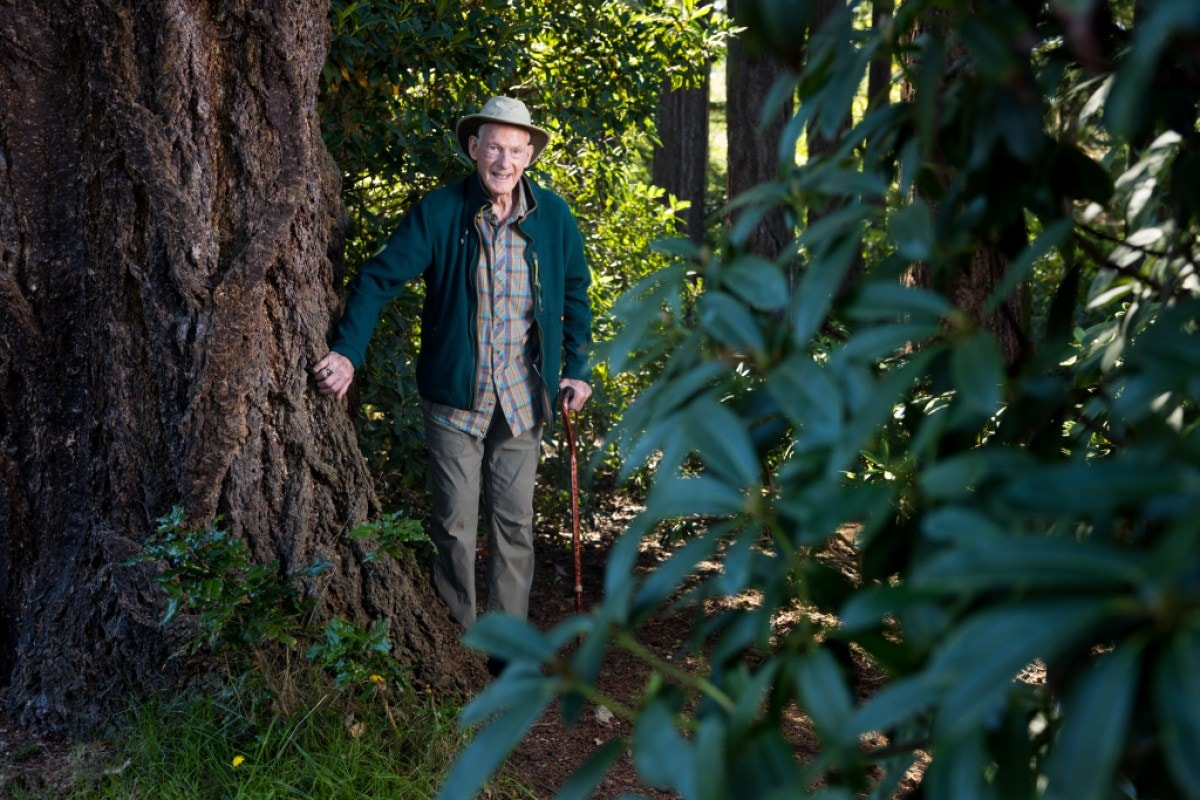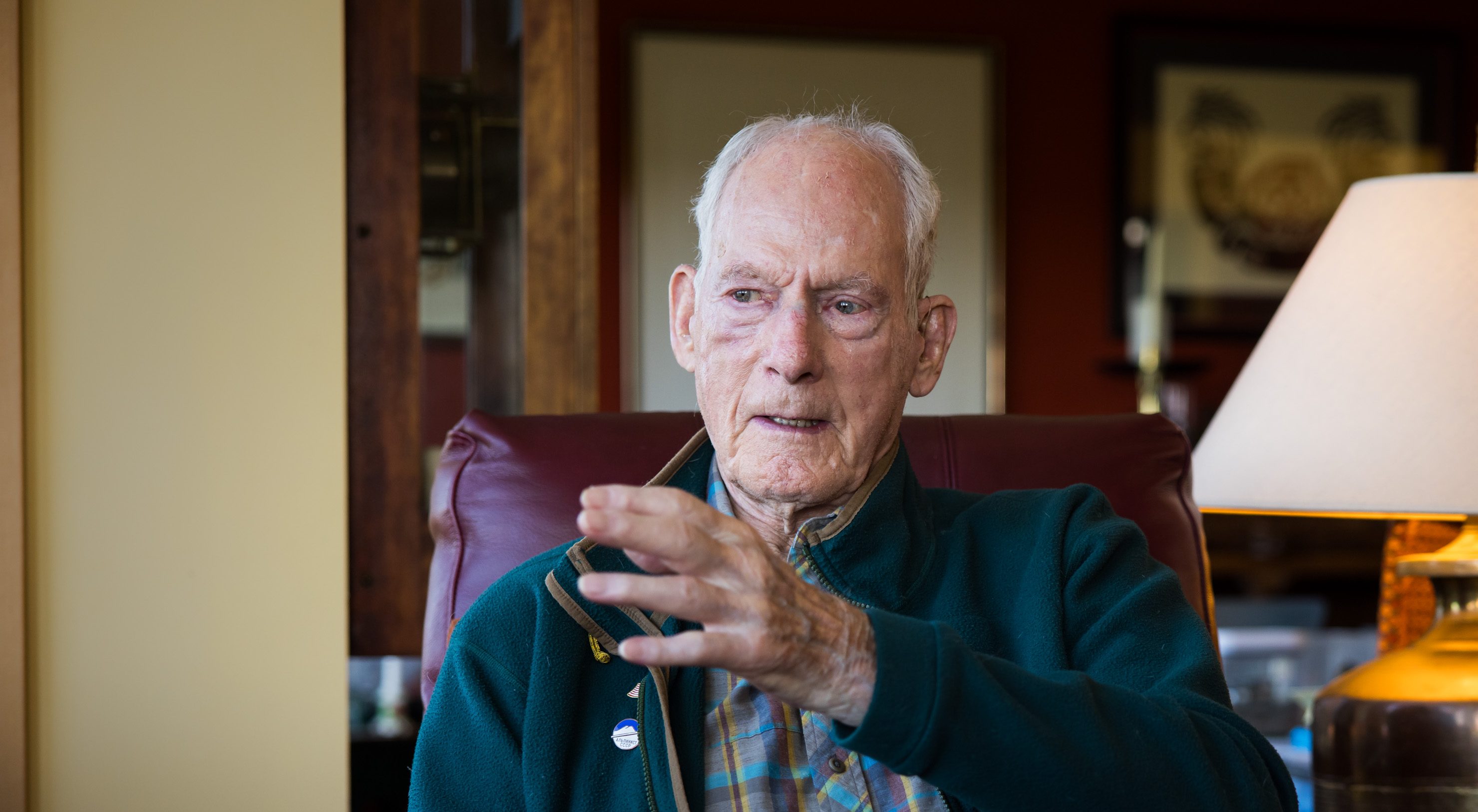Ascents still involve planning, preparation and willpower for Jim Whittaker, arguably the most famous American climber of the 20th century: first American to summit Mount Everest, vacationer with presidents, first paid full-time employee of REI, and then the co-op’s second CEO.
But at 96, the scale of the climbs has changed. Today’s challenge: the 17 stairs from Whittaker’s basement to the main floor of his Port Townsend, Washington, home, where guests await to hear him share stories of his mountaineering adventures.
“You ready, Jim?” says Dianne Roberts, his wife of 50 years. Locking her arm in his—a climber’s three-points of contact still in play—they begin the march to the family room with its panoramic view of the Puget Sound, so he can tell his larger-than-life story one more time.
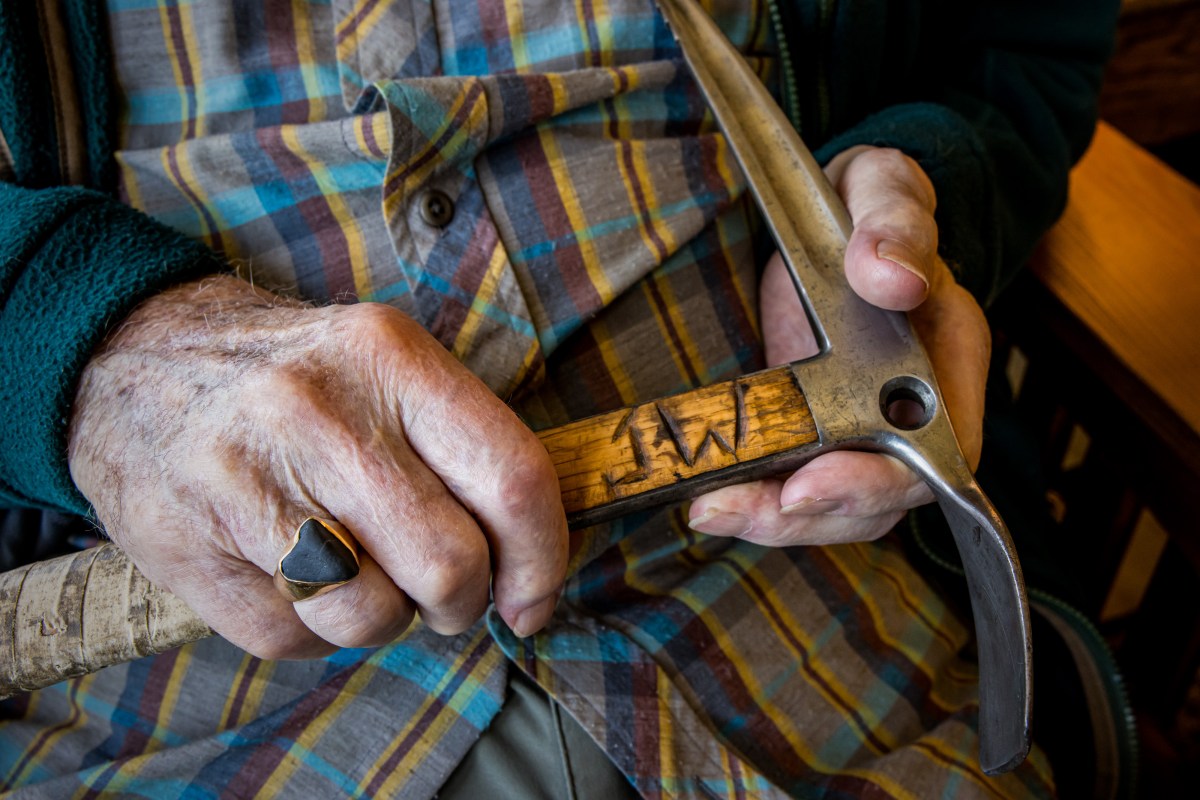
A Childhood Outside
Whittaker was born in Seattle on Feb. 10, 1929. Twin brother, Louie, followed a few minutes later. In the Whittaker household, only the eldest, Barney, was called by his given name. Jim and Louie were simply “the Twins.” “We were inseparable,” Whittaker tells Uncommon Path.
In 1931, the Whittakers’ parents, Hortense and Charles, moved the young family to the West Seattle neighborhood after building a two-bedroom house for $350 on a lot with a view of Puget Sound and the Olympic Mountains. Charles and Hortense loved the outdoors. Family trips often involved camping with the boys in the Cascades or on a beach near the sound. To the twins, West Seattle seemed like the edge of civilization. They explored nearby groves or the beach. They joined the Boy Scouts.
“Back then, there was hardly a better place to be a Boy Scout than Seattle,” Whitaker writes in his book, A Life on the Edge. “Out the front door we had the Olympic Mountains and out the back door, the Cascades.” (Their troop once got so lost that it returned home nearly a day late, to panicked parents.) These experiences would shape the direction of both boys’ lives.
Climbing Adventures
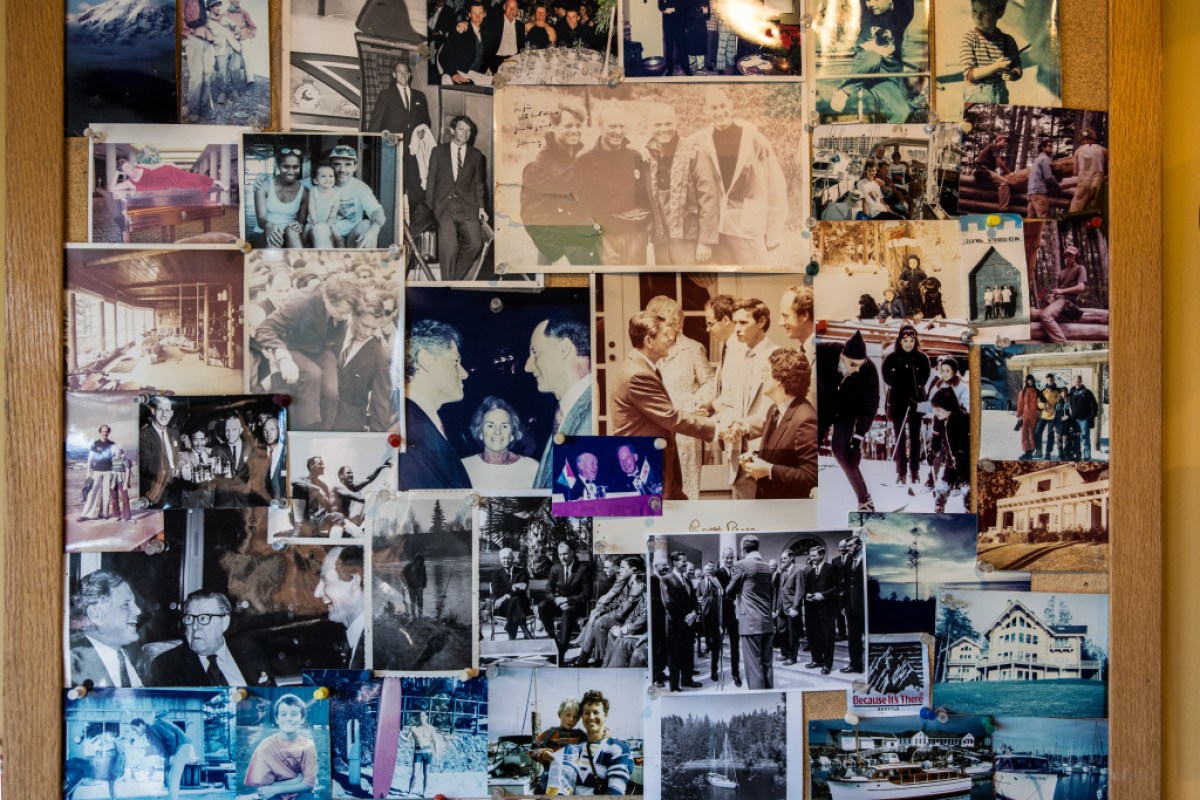
By the 1950s, now in their late teens, all three brothers moved from the Boy Scouts to the Mountaineers Club, where they learned rock climbing and alpine climbing.
The thrill—and peril—of their new pastime came to a head for the trio one day above Snoqualmie Pass, on a climb called the Tooth, a rite of passage for Seattle-area climbers even today. The Tooth isn’t a long climb. The upper part is easy, with decent handholds. Lower down, though, climbers must inch around a corner to a ledge that’s less than a foot wide. Below the ledge? A drop. “The gap lay in shadow. I stepped up to its edge, began to move out over it to the cliff a few feet away, glanced down past my left foot and…froze solid,” Whittaker recalls in his memoir, “The cliff plunged straight down for what looked like 1,000 feet. I was terrified.”
The brothers completed the climb, but all three vowed never to climb another mountain. Barney kept his promise. Jim and Louie “spent the rest of our lives breaking it,” Whittaker writes. “That day, only moments apart, we each crossed a gap within ourselves and, in the process, had been exposed not just to danger but to our destinies.”
After college, and with the Korean War raging, luck intervened to keep Jim and Louie out of combat, which neither wanted. (Both were already in the Army.) Both had worked as climbing guides on Mount Rainier before the war. The Army’s Cold Weather Training Command at Camp Hale, Colorado (original home of the 10th Mountain Division) needed instructors to teach special forces soldiers to ski, climb and navigate in snowy wilderness. Friends made an introduction, and the Army transferred the twins to Colorado to work as instructors.
Looking back years later, Whittaker says teaching those gung-ho soldiers prepared him to navigate big egos on international climbing expeditions and in the corporate world.
General Manager of REI
In 1954, released from the military, Whittaker picked up a call from Lloyd Anderson, a former climbing instructor who had known him since his Boy Scouts days. The downtown Seattle cooperative that Anderson had co-founded with wife Mary was then a climbing gear importer simply known as the co-op. It had grown to 600 members, and Anderson couldn’t keep up with demand. He needed help.
Whittaker became the first full-time paid employee of the co-op in 1955—earning $400 a month, plus a bonus from sales. And so “began the twenty-four years in which he would gain fame as the biggest bum in Northwest mountaineering history, and then ruin things by making bumming respectable,” writes author and hiking advocate Harvey Manning in REI: 50 Years of Climbing Together.
The co-op occupied a tiny space at the corner of 6th Avenue and Pike Street. Across the hall was the Mountaineers Clubhouse, which meant a steady stream of customers who were excited to handle the new pitons and ice axes that had arrived from Europe. Whittaker got to work organizing the 10-by-20-foot room. He created mailing lists and compiled a rolodex of gear suppliers.
When the second full-time employee was hired six months later, the co-op added a ski shop. Business boomed. The company moved to larger space and soon changed its name to Recreational Equipment, Inc.
Rainier and Denali Ascents
Meanwhile, Jim and Louie were gaining reputations as exceptional mountaineering guides for the growing number of people taking up mountaineering. Many came for the pull of 14,411-foot Mount Rainier, practically in the Whittakers’ backyard. The peak offers something for climbers of all abilities with its crevasse fields, violent weather changes, significant exposure and cold. In fact, it often serves as a training ground for climbers eyeing Himalayan and Andean summits.
The brothers’ regular Rainier ascents led in 1960 to a successful expedition to Alaska’s Denali—North America’s tallest mountain. The trip didn’t go all smoothly; a significant fall on the descent required one injured climber to be rescued by helicopter.
Still, the expedition helped prepare Whittaker for a call that would come the following year—one that would change his life.
The World’s Tallest Peak
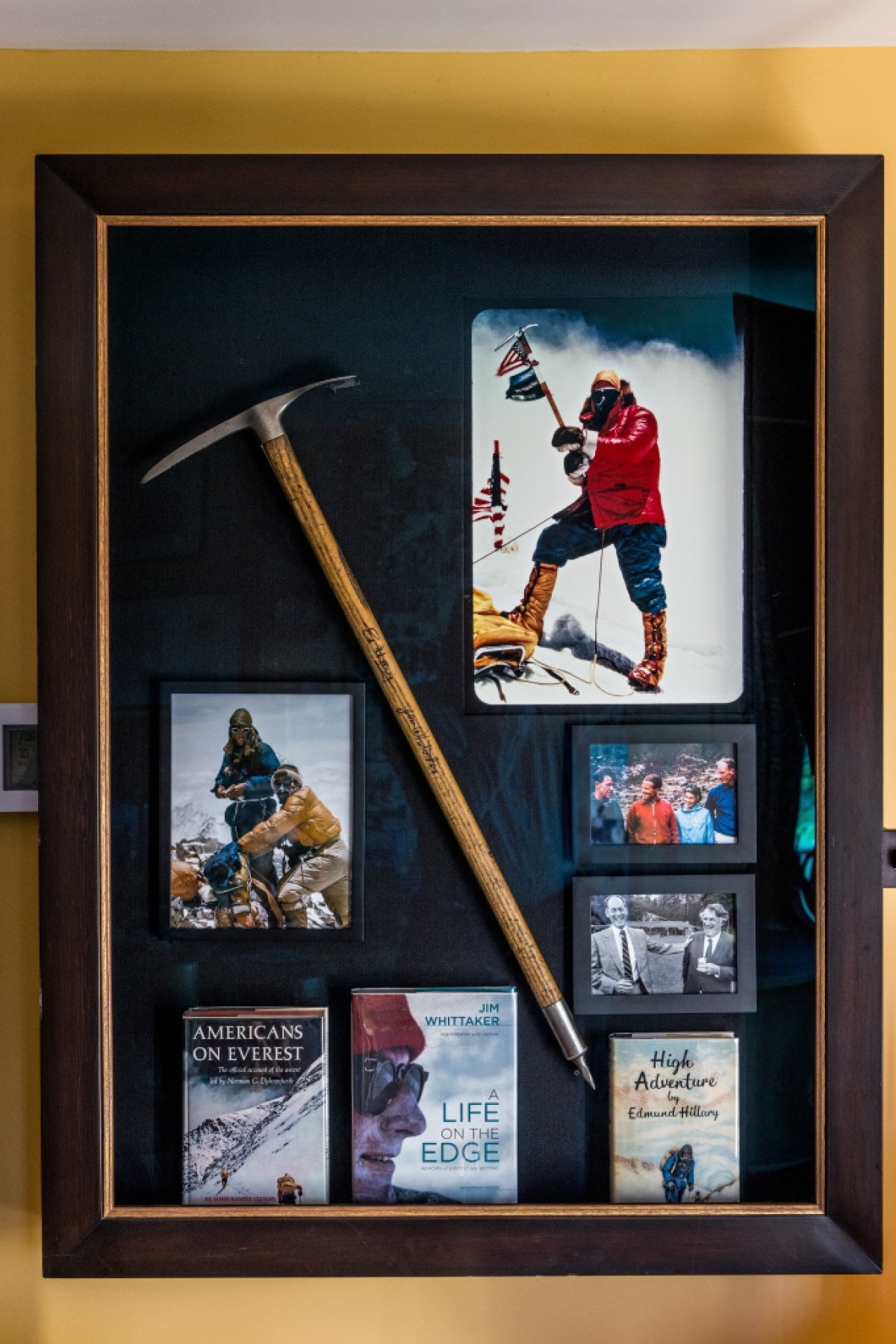
By the early 1960s no American had made it to the top of Mount Everest.
Swiss filmmaker Norman Dyhrenfurth contacted the Whittaker, hoping to recruit them for an Everest expedition. Louie declined the trip, whereas Jim became an instrumental member of the team. (Louie, who founded the climbing company Rainier Mountaineering Inc., died in March 2024.)
With his REI expertise, Jim selected, arranged and shipped tons of gear for the four-month expedition. He also secured sponsorships from Seattle-based companies Eddie Bauer and Rainier Beer.
On May 1, 1963, the team summited, with Whittaker reaching the top alongside Sherpa Nawang Gombu.
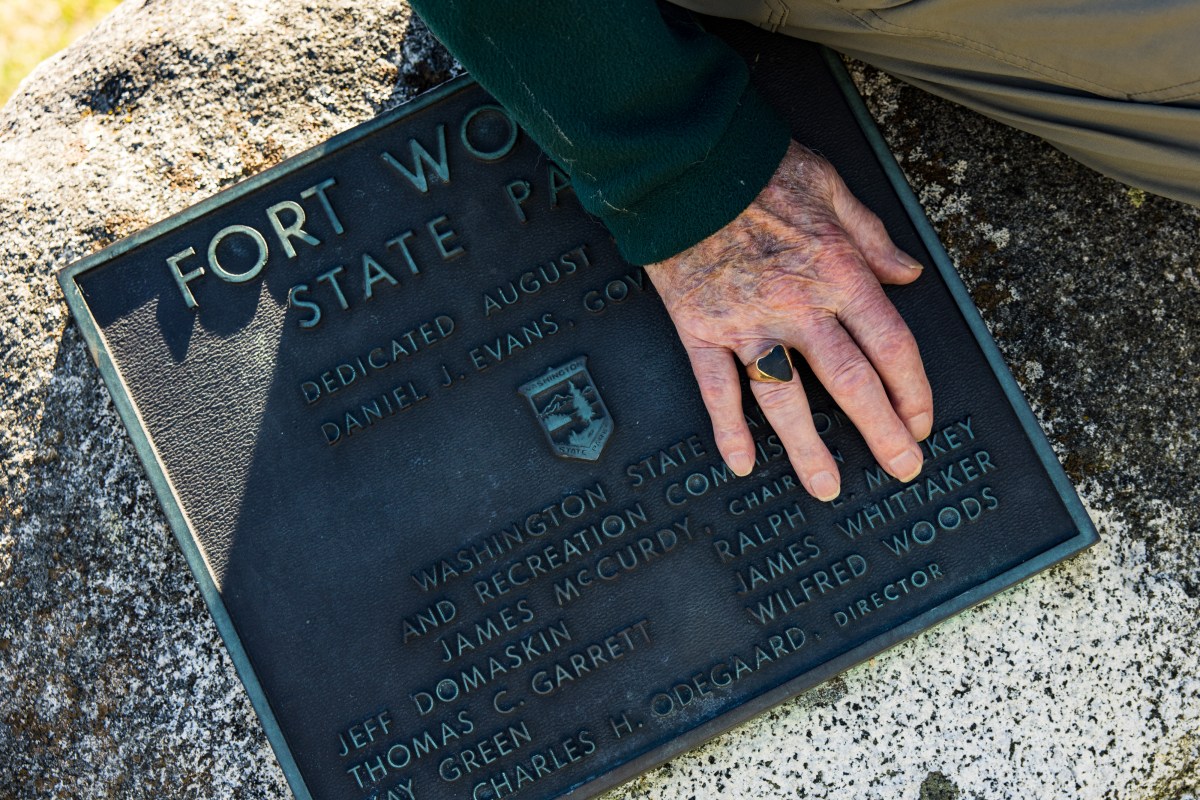
At home in Port Townsend, Whittaker shows off a gold ring he still wears. It’s set with a simple, black, heart-shaped stone. He picked up the stone on Everest’s summit. When he returned to Seattle in 1963, he handed it to a jeweler. “I told [the jeweler] ‘Don’t lose that S.O.B or you’re dead,’” Whittaker tells Uncommon Path, laughing at the memory.
But he did lose something after the trip: his anonymity. “Back then, everyone paid attention to these climbs,” climber Ed Viesturs, tells Uncommon Path. “It was a very nationalistic thing…. The president took notice,” says Viesturs, one of a handful of people to summit the world’s 14 highest peaks and only one of few to do so without supplemental oxygen.
“There was a huge parade through the streets of Seattle with confetti and bands playing,” Whittaker writes in A Life on the Edge. “I was given keys to the city. I kept thinking, ‘Look, all we did was climb a mountain.’ (But) it began to dawn on me that my life had changed forever.”
REI also was turned upside down, Manning writes in his book, as media outlets mentioned the co-op along with Jim’s achievement; “the free advertising catapulted REI from obscurity to fame.”
Friendship with the Kennedys
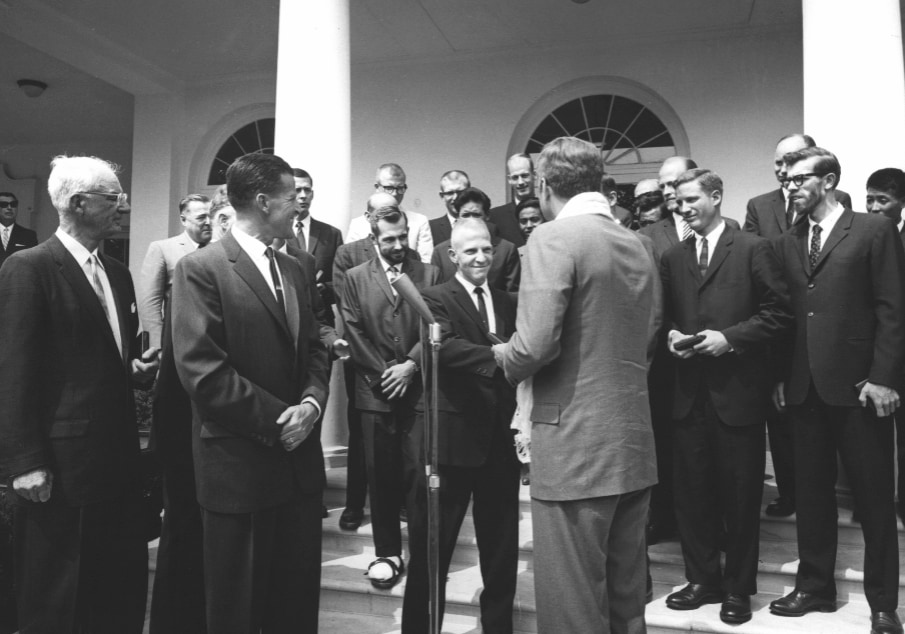
About a month later, the climbing team, Sherpas included, met President John F. Kennedy at the White House. The visit sparked a decade-long friendship between Whittaker and the Kennedy family.
In 1965, Whittaker guided Sen. Bobby Kennedy, the late president’s brother, to the summit of Mount Kennedy in the Yukon of Western Canada, a previously unclimbed peak named for JFK. Whittaker and Bobby became close friends. Their families often vacationed together, taking skiing or rafting trips. Whittaker chaired the Washington state campaign for Bobby’s 1968 presidential bid. And Whittaker mourned with the family when Bobby was assassinated in 1968.
Meanwhile, Whittaker continued climbing, running REI, raising three sons (Carl, Scott and Bobby), and drifting apart from his wife, Blanche. His travel and very public life—Life Magazine photo spreads, business trips, Sun Valley ski trips with the Kennedy clan and other celebrities—widened a gulf between them, he writes in his book. They divorced in 1971.
Second CEO of REI
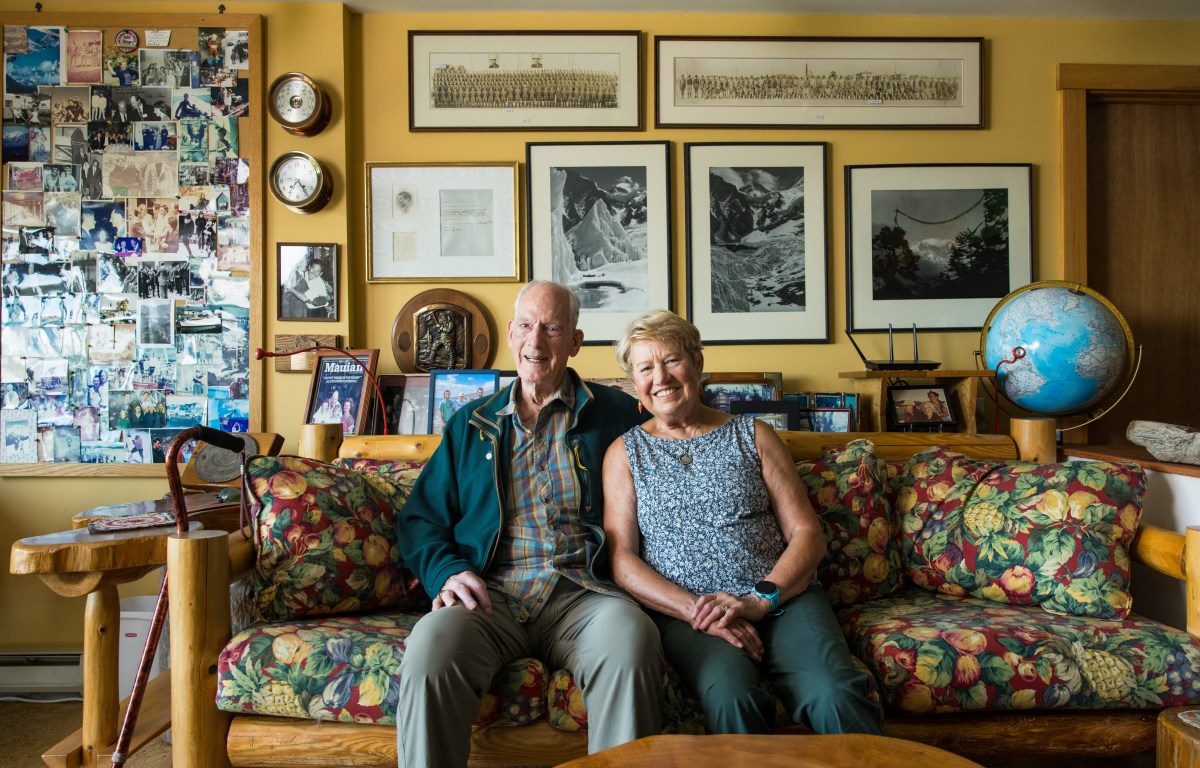
By 1971, “after 15 years being groomed for the position,” according to Manning, Whittaker had taken on duties as CEO.
At a 1972 meeting of the U.S. National Parks Board in Calgary, Whittaker heard a woman across the room in an animated conversation with his friends. He walked over. “It was love at first sight,” he writes in his memoir. Roberts, a professional outdoor photographer, had the same adventurous mindset as Jim. They were engaged a year later.
Roberts would become central to the next stage of Whittaker’s career: an American attempt to summit K2, the world’s second-tallest mountain. Climbers often say that K2 and Annapurna are harder to climb than Everest—with more complicated approaches, unpredictable weather and perpetual avalanche danger.
Whittaker’s 1975 expedition to K2, aided by Roberts as team member and official photographer, ended without a summit. Three years later, Whittaker led another attempt. Although he didn’t reach the top, climbers Jim Wickwire, an REI board member and part of the 1975 expedition, and Lou Reichardt summited. It marked the third ascent of K2 and the first by Americans.
That successful K2 summit partly led to his departure from REI in 1979, which had been building for years, he says. He felt disconnected from upper management, who to him seemed more in touch with commerce than the outdoors.
“I was taken aback by the somewhat chilly reception after I returned from our successful assault on K2,” Whittaker writes in A Life on the Edge. “None of my board members climbed and as a consequence seemed able to appreciate what our American team has accomplished.” He retired from REI in 1979. During his last decade at REI, the co-op grew from under 200,000 members to over 900,000 members.
Conservation Trailblazer
While at REI, Whittaker led conservation efforts long before the co-op became synonymous with movements like #OptOutside. He saw a need for the co-op to protect the environment.
Even before he assumed the duties of CEO, he secured board approval in 1968 to testify in D.C. on behalf of REI for the creation of the North Cascades National Park and Pasayten Wilderness, both in Washington state, and Redwood National Park in California.
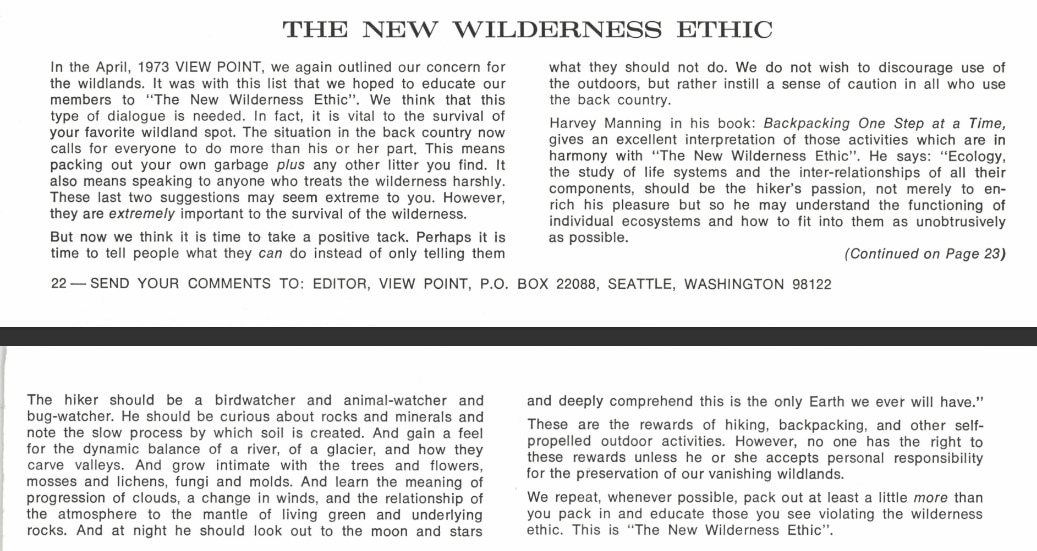
Under Whittaker’s leadership, the co-op organized cleanups and trail improvements; donated to environmental organizations; and promoted the message, “If you pack it in, pack it out” in its catalogs. Whittaker also personally advocated to protect wilderness areas and other wild places, testifying at hearings in D.C. and in his home state.
Retirement from REI didn’t mean slowing down. In 1990, he led the Everest International Peace Climb, uniting American, Soviet and Chinese climbers. The Peace Climb was less about mountaineering and more about showing the world that cooperation and collegiality weren’t dead. “On the Peace Climb, I got a chance to watch how good Jim was at these large-scale expeditions,” says Viesturs, then a young guide invited to work on the expedition. Logistics, politics, language barriers and egos complicated everything, he said. Tensions grew. “Jim stepped in and became the leader, as he typically did,” Viesturs tells Uncommon Path. “He got everyone organized and he made it clear that members from every country would summit, or no one would summit.”
A Full Life
Back in Port Townsend, Whittaker mentioned still more stories—the interlocking pieces of what he called his “full life.” He helped a blind climber reach the summit of Mount Rainier. He recounted a tale about a late famous astronaut who, after a few drinks at a black-tie dinner, threatened to “moon” the audience.
Whittaker wanted to keep going, but Roberts signaled it was time to wrap up. Twenty years his junior, she runs the routine of Jim’s life these days. “He’s always pushed himself so hard,” she says. “So it’s up to me to remind him [when it’s time to rest].”
But Whittaker knows his lack of an off switch is, in essence, why he has a story to tell. “There is still more to say,” he says, with a grin. “I don’t think we’re done quite yet.”
